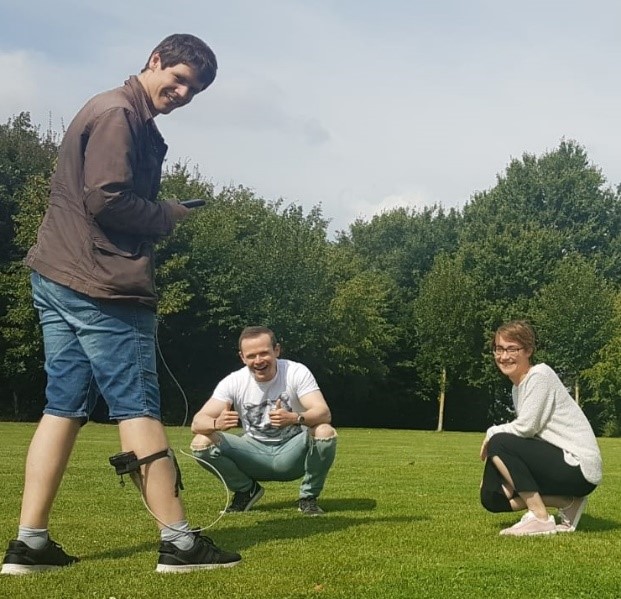North of Sonderborg, alongside the Alssund, the gentle farmland of Jutland stretches into the horizon. Fields of early autumn colours keep small patches of woodland company as the summer comes to a close with a final, and intense, hurrah. Deer move freely between the grasses and the trees, ignoring the hedgerows and fences demarking man-made borders, and graze watchfully as human visitors descend onto their land. Along the shoreline, the sun-drenched waters of the Alssund lap with a knowing urgency that the summer will soon be gone, shimmering in the evening gloom with a blue luminescence that mirrors the ether above. The end of the season leaves hay baling at the forefront of many minds in Jutland, but not those of the visitors. Wedged between the Alssund and a small lake, as tightly as the thatching of the roofs that litter the area, is the yellow mansion of the Sandbjerg estate. Within the mansion the visitors have a different agenda – personal sensors. How can they be used? What are their practical and ethical implications?
I’m attending the inaugural summer school hosted by the Big Data Centre for Environment and Health (BERTHA), where the chosen emphasis for the six days in which we have taken over the Sandbjerg estate is the use of personal sensors in research. At first glance this seems quite a niche focus, but it immediately becomes clear the world of personal sensors is a broad church with room for interest from across disciplines. This is exemplified as summer school participants (MSc and PhD students alongside Postdocs) come forward to deliver short presentations summarising their own research. For me, this is an opportunity to share my developing understanding around the sub-second measurement of movement and its relationship with neurodevelopmental risk. For others, it is an opportunity to discuss humans and companion robots, the use of sensors for environmental particle measurement, or the use of machine learning in neuroscience. The extensive range of topics, disciplines and interests makes the entire event a trip beyond my comfort zone and into a realm of academic uncertainty.

Initially this is an unnerving experience as each day we are presented with a different personal sensor and tasked with designing a study that will utilise its potential. I’m genuinely surprised at how easy it is to become intimidated when those around you possess skills very different from your own. However, with each sensor we work with a new group of participants and begin to exploit the skills and expertise of each team member. This not only allows for an efficient work process and improved final product, but creates the opportunity for us to learn from and appreciate the backgrounds of one another. By the final project we are working as finely-honed research teams, any trepidation has vanished, and the whole process has become a thoroughly enjoyable learning experience.
Our time spent working with and understanding the role of fitness sensors in research is especially thought provoking. As well as gaining hands on experience with the sensors we are also exposed to experts who are currently using them (in conjunction with mobile applications) in their own research, which allows us to hear the opportunities and challenges associated with off-the-shelf fitness monitors. The evenings provide the opportunity for continued access to the experts in a more informal environment that prompts not only the sharing of thoughts and ideas, but also an exploration of the motivations and differences that come with working alongside individuals from different countries and cultures. Conversations in the sauna, over table tennis, and during games of Kubb (a Scandinavian lawn game that Wikipedia describes as a cross between bowling and horseshoes – it’s a lot more fun than it sounds) focus minds, build relationships and cement the first BERTHA summer school as a success.

As the final day of the summer school dawns, so has autumn. Clouds blot out the sun that has drenched Jutland and rain replaces the rays that warmed the soil and the sea. It bombards the fields and woodlands, bouncing from leaves and quickly saturating the earth. The once serene Alssund no longer laps at the shore, but has found a renewed menace that lay subdued over the summer months. Deer continue to cross borders without care and are oblivious to the visitors departing Sandbjerg estate. Each visitor takes with them an enhanced understanding of both the opportunities and challenges associated with using personal sensors in research, along with the experience of working on testing assignments with colleagues from different countries and disciplines. As groups of attendees disappear into the rain, the ongoing deluge marks both the end of summer, and the culmination of the first BERTHA summer school.


Leave a Reply
You must be logged in to post a comment.